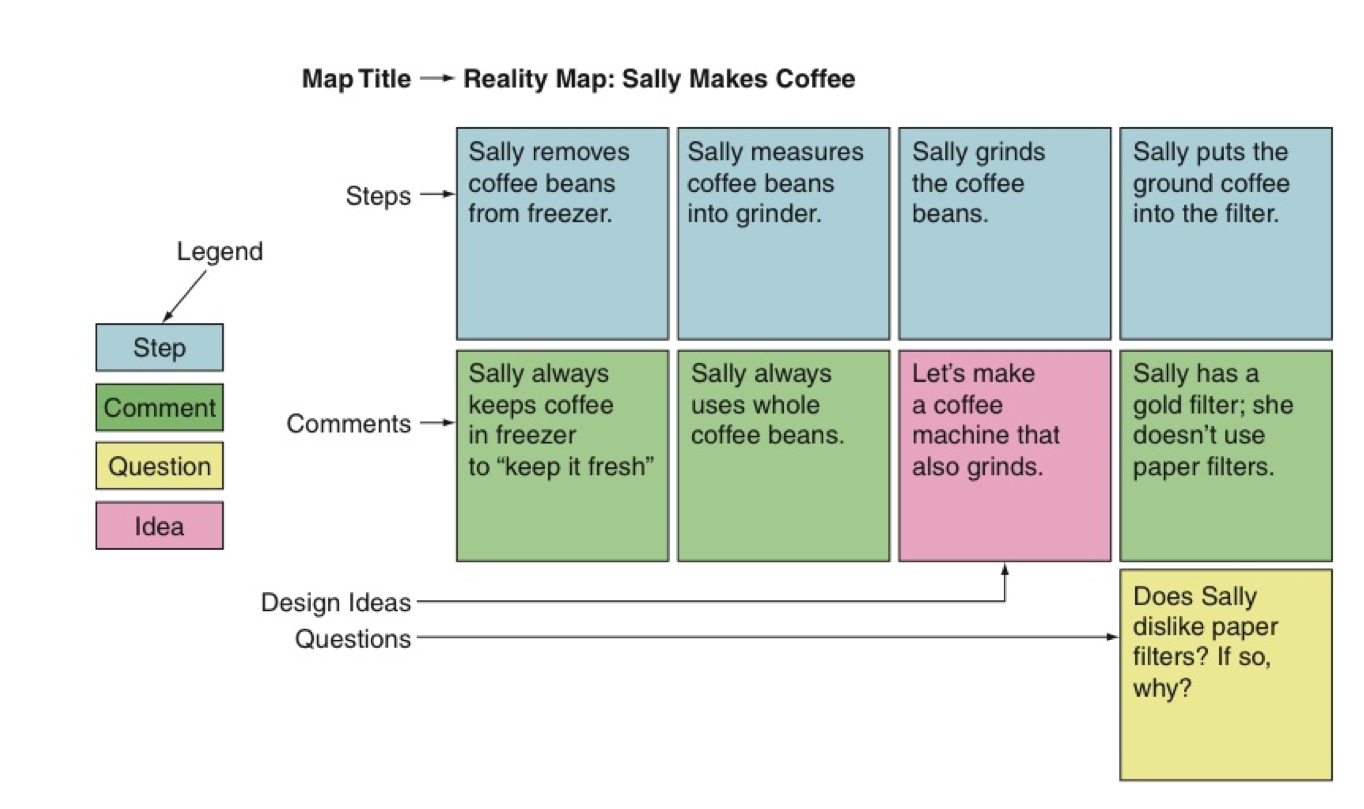Reality Maps & Design Maps: Chapter 10 from The Persona Lifecycle book
Reality Maps and Design Maps are yet another way to do journey or experience maps. The big idea? Use a simple color-coding system to create two kinds of Maps:
Reality Maps show how people actually do things today (for example, making a cup of coffee using their mom’s 1995 Mr. Coffee machine). UX practitioners can create them with ‘users’ by asking ‘what do you do first? What do you do next?’ The result: a ‘map’ that enables anyone to see how a particular type of user, with a particular role and/or goal and/or belonging to a particular segment, uses tools available today to get something done.
Design Maps show how things could work in a world where your exciting new product or feature or system exists. They are a tool to organize design sessions with your team mates or other collaborators.
Both types of maps are easy to create, easy to understand and read, and enable you to wrangle lots of ideas from lots of people without getting overwhelmed. They are not hugely different from any other kind of journey mapping technique, but their simplicity, legibility to anyone from any discipline, and before-and-after big-picture creation make them super-useful.
Click to read Chapter Ten: Reality and Design Maps
Co-authored by Tamara Adlin and Holly Jamesen Carr, from John Pruitt and Tamara Adlin’s The Persona Lifecycle: Keeping People in Mind Through Product Design, 2005. Available by permission from the publisher, Morgan Kaufmann / Elsevier.

